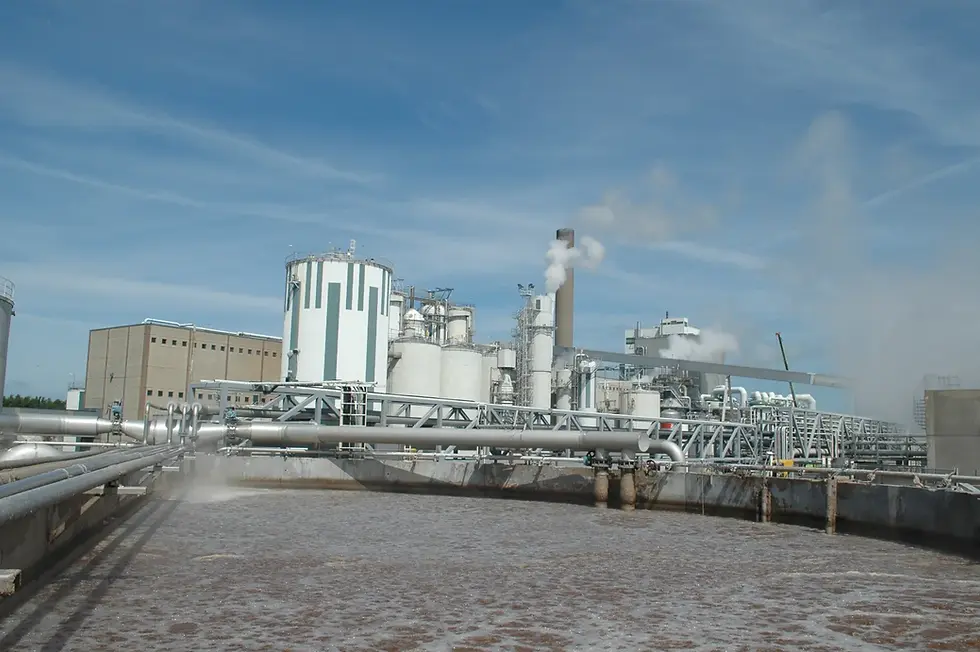Catalyst-Free, Compressor-Free: The ‘Less-is-More’ Philosophy in Reaction Engineering
- cemnar0
- Jul 18
- 2 min read

Introduction: Simplifying Complexity in Chemical Production
In traditional chemical synthesis, complex process steps, catalyst handling, high-pressure pumps, and energy-intensive conditions are often seen as necessary trade-offs for yield and product quality. However, Sulzer’s ‘less-is-more’ philosophy upends this paradigm. By relying on advanced mixing and optimized flow design, Sulzer enables catalyst-free and compressor-free operation improving efficiency, sustainability, and flexibility without compromising purity.
The Downside of Conventional Approaches
Most standard processes for producing amines or glycol ethers involve:
Catalysts prone to fouling, deactivation, and costly replacement shutdowns.
High-pressure pumps and compressors for gas-liquid mixing, driving up energy use and maintenance needs.
Lengthy cleaning cycles due to fouling or side-product build-up.
Increased risk and process complexity, especially when working with exothermic or hazardous materials (like ethylene oxide).
These challenges can stifle productivity, increase operational risk, and raise the total cost of ownership for specialty chemical plants.
Sulzer’s Enhanced Mixing: The ‘Less-is-More’ Solution
Leveraging decades of expertise, Sulzer has engineered a platform for intensive inline mixing, precise temperature control, and narrow residence time distribution all without the operational and safety baggage of catalysts or compressors.
Core Innovations
Optimized Static Mixing Internals
Sulzer’s reactors employ state-of-the-art static mixers and flow control elements, ensuring uniform dispersion of gas and liquid phases as well as superior heat transfer even under vacuum and low-pressure conditions.
No Catalyst Required
Thanks to this optimized contact and residence time, targeted reactions (such as the formation of ethanolamines, specialty amines, and glycol ethers) reach completion naturally suppressing by-product formation and maximizing selectivity.
Compressor-Free, Low-Pressure Operation
The process is designed to operate under vacuum or mild pressure, eliminating the need for high-pressure pumps and reducing the plant’s energy demand and risk profile.
Cleaner, Safer Plants
Fewer moving parts and minimal pressure means less maintenance, quicker changeover or cleaning, and easier scale-up or revamp for new products.
Key Applications
Sulzer’s minimalist, high-efficiency reactors are used for:
Ethanolamines: MEA, DEA, TEA
Specialty Amines: MDEA, MMEA, DIPA, TIPA
Glycol Ethers: PGME, EGBE, and more
Plants can operate at capacities up to 100,000 tonnes per year, switch between amines and glycol ethers (swing capability), and maintain product purities that set market benchmarks.
The Business & Environmental Benefits
Feature | Impact |
No catalyst | Lower OPEX, higher uptime, and no catalyst waste |
No compressor/high-pressure | Reduced energy bills and safer operation |
Enhanced mixing | Top-tier selectivity, less waste, more yield |
Simpler design | Lower CAPEX and easier process revamp/upscale |
Cleaner output | Minimal by-products, easier purification |
Example:
A specialty plant revamped with Sulzer’s compressor/catalyst-free mixing reactor saw its energy use and maintenance requirements drop by double-digit percentages while product quality improved and process safety was greatly enhanced.
Conclusion: Smarter Engineering for a Greener, Leaner Future
Sulzer’s ‘less-is-more’ mixing philosophy combines intensive engineering know-how with real-world simplicity.
The result: high-purity, flexible chemical production without compressors, without catalysts, and without excessive complexity. In today’s market, that’s a formula for both sustainability and profitability.




